Whether you’re traveling in Japan and ran out of formula milk, or you’re a new parent and ex-pat with no clue which formula you should buy, our guide is here to help, and probably the only Japanese formula milk guide available online. We’re parents and have gone through all the experience of finding the right milk for our daughter while living here in Japan. You’ll get to know the different selections of infant and toddler formulas available in Japan without needing to decipher the Japanese language.
Aside from this guide, check out our resources for traveling in Japan with your baby:
- Best things to do in Tokyo with a baby or toddler
- All about baby diapers in Japan (Buying Guide)
- Best family and baby-friendly hotels in Tokyo
Formula Milk Manufacturers in Japan
Like in the US or other countries, there are many different formula milk brands to choose from in Japan. All of which are cow’s milk protein-based. There are 6 significant manufacturers marketing infant and toddler formula milk, namely:
- Beanstalk
- Icreo
- Megmilk Snow Brand
- Meiji
- Morinaga
- Wakodo
By the end of this article, you should be better informed on which type of formula milk you think is best to get for your baby.
DISCLAIMER: I am not a professional or licensed medical practitioner. All the information that you will see in the article about the milk was taken from the brand’s official website and from the nutrition labels themselves. I am not advocating formula over breast milk but simply assisting those who need/choose to use formula while in Japan.
Where to Buy Formula Milk in Japan
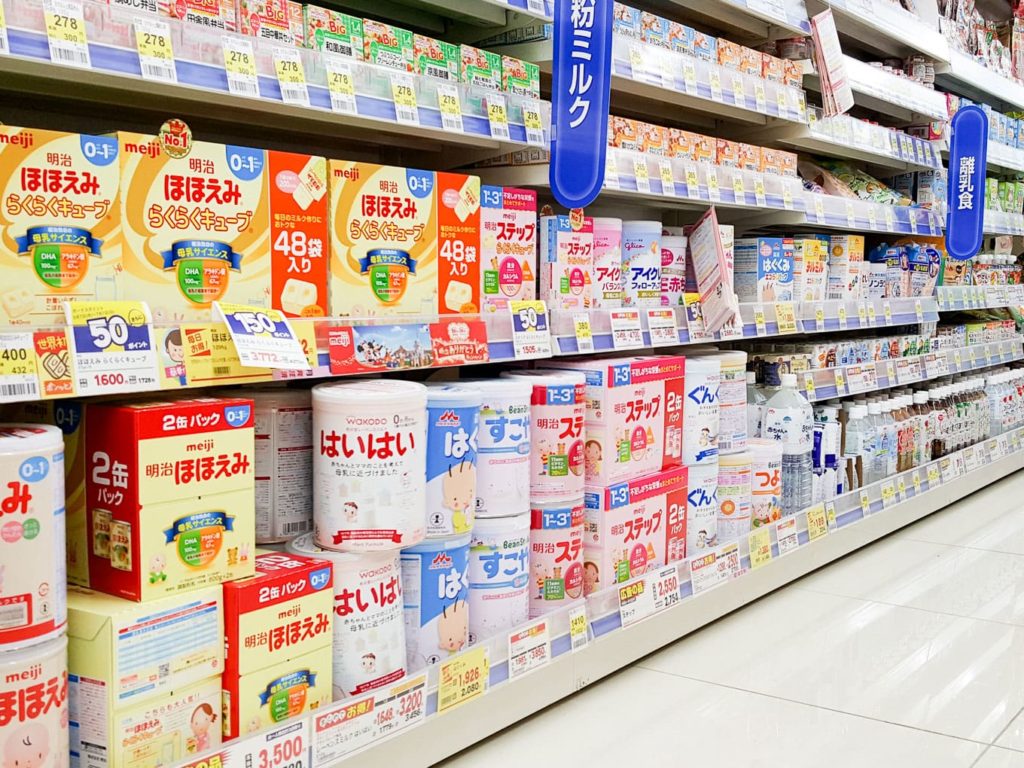
For families in Japan on a short-term stay, drugstores and MEGA Don Quijote stores are the best places to buy formula milk. However, the biggest (and most obvious) challenge is that many drug stores are written in Japanese characters. So, the best way to find one as a visitor is to ask your hotel’s receptionist for directions. Or use Google Maps and type the keyword: drugstores near me.
Here are some notable drugstores in Japan that almost always have formula milk:
- Create SD
- Daikoku Drug
- HAC Drug
- Matsumoto Kiyoshi
- OS Drug
- Welcia
NOTE: Not all drugstores carry formula milk. If they don’t have it, it is most likely just a cosmetic drugstore. So you need to look for another one.
Create SD and Welcia are my personal favorite because their stores always have formula milk and a better selection of other baby essentials. You may have also seen or heard of Akachan Honpo or Babies’ R’ Us from other mothers in Japan. Although they have a vast selection of formula milk and other baby items, I find that formula milk from those shops is more expensive. I’ve also heard that Costco Japan carries some international formula milk. However, it’s unclear which brands are available since it varies by Costco location. Besides, it would be best if you also were a Costco member to get inside.
Where to buy distilled water in Japan for mixing baby formula
You can also buy distilled water from all those places mentioned above. Look for this kanji to find bottled distilled water: 蒸留水. It usually comes with other kanji before or after, but those three kanji are the ones you should be looking for.
How to Determine Infant vs Toddler Formula
Before you hit the drugstore, it pays to know how to distinguish formula milk and whether it is precisely for infants or toddlers. For infants, look for the sign 0 カ⽉月 – 1歳. This translates that the formula milk is for infants 0 months to 1 year old. The same is true for toddler milk. Depending on the manufacturer, some will show it’s for 9 months to 3 years (9カ⽉月 – 3歳) and some for 1 year to 3 years old (1歳 – 3歳). Both can be given to toddlers. Toddler milk in Japan is also called “follow-up milk” (フォローアップミルク).
Regular Formula Milk for Infants and Toddlers
Now, let’s see the different formula milk marketed in Japan.
1. Beanstalk
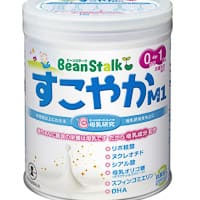
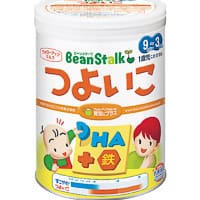
Beanstalk is the only formula milk in Japan that has RNA, a nucleotide found in breast milk that boosts the immune system and supports digestive health. However, the Beanstalk formula does not have ARA. Beanstalk has been in the breast milk and formula milk research industry for over 60 years. They stated that the nutrients in their formula are the closest match to breastmilk and could be why Japanese hospitals recommend Beanstalk for supplement feeding. I think this claim is for pure marketing only, and they did a great job with it. As a mother, you should always keep in mind that nothing can replace the nutrients and breast milk benefits.
2. Icreo
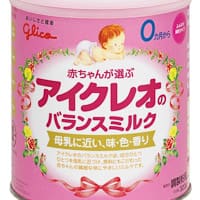
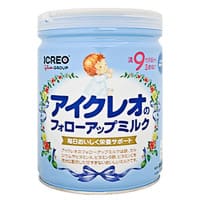
Icreo is a daughter company of a Japanese food company, Glico. Icreo specializes in the manufacturing of baby food and formula milk, and skincare products for babies. Icreo stated that their baby formula milk resembles the color of the mother’s milk and even its taste, which makes it slightly sweeter than other Japanese formula milk. However, their milk didn’t contain DHA or ARA which are vital for brain development. Instead, they claimed that their milk’s alpha-linolenic acid (ALA) component converts into DHA.
3. Meiji
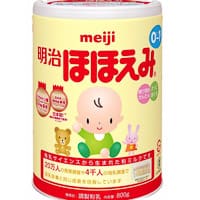
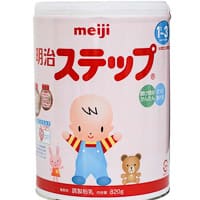
Meiji’s formula of casein and whey protein closely matches a mother’s milk. However, in early 2011 after the Fukushima Nuclear Power Plant disaster, Meiji detected cesium traces, a radioactive chemical that can be dangerous when consumed in large amounts. Batches of Meiji formula milk were recalled immediately, though. The same year around December, Meiji started to test their milk for any radioactive substances voluntarily. From then on, they have been publicly releasing the results of their tests, ensuring everyone that their milk has no trace of radioactive substances and is safe to consume. Meiji formula milk for infants has both DHA and ARA, making it popular formula milk to mothers in Japan.
4. Morinaga
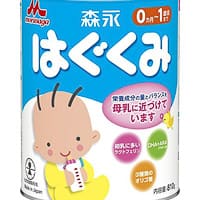
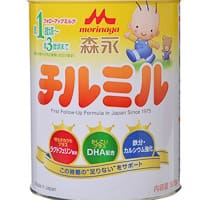
Morinaga formula for infants contains both DHA and ARA. Morinaga is the first Japanese manufacturer to blend lactoferrin in baby formula milk. Lactoferrin is a protein found in the colostrum of breast milk with bacteria-inhibiting properties and helps prevent constipation.
Morinaga also has different types of formulas for babies with gastrointestinal troubles and lactose intolerance. Most mothers in Japan favor this brand as the milk easily dissolves in water. However, it’s the most expensive formula milk.
5. Wakodo
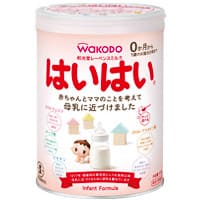
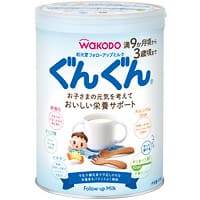
Wakodo is the only Japanese formula milk with biotin, which is known to have good benefits for hair, skin, and nails. Our toddler drank this milk (Wakodo Gun Gun) when she was 13-24 months. This is probably the reason why her nails seem to grow so fast. Wakodo is also one of the oldest Japanese food companies. They were the first company ever to make formula milk in Japan, starting in 1917. Both Wakodo infant and toddler formulas are popular choices for those on a budget, as this is the cheapest brand. Wakodo formula milk for infants contains both DHA and ARA.
6. Megmilk Snow Brand
Megmilk Snow Brand Milk is perhaps the least popular milk brand and isn’t advertised nearly as much as other brands. Maybe this is because the brand itself is still recovering from a scandal in 2000 involving food poisoning from its plant in Osaka. It isn’t easy to find any information online about this brand, to be honest. I’ve also never seen this milk in the aisles of drugstores.
Soy-Based Formula
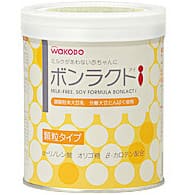
Wakodo Bonlact-i is the only formula milk in Japan that is soy-based that I’ve been able to find.
So, if your baby has a sensitivity to cow’s milk, then Bonlact-i is the alternative while you’re in Japan.
Amino Acid-Based Formula
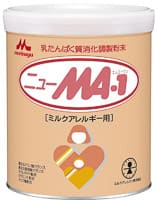
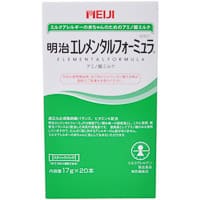
These types of milk are also called elemental milk. They’re made of fully hydrolyzed milk protein and are created for babies with severe milk or soy allergies. Similar to Enfamil Nutramigen, NeoCate, and EleCare in the US. So far, I’ve only seen two brands that sell elemental milk in Japan, Morinaga, and Meiji: Morinaga New MA-1 and Meiji Elemental Formula.
Lactose-Free (For Lactose Intolerance or Galactosemia)
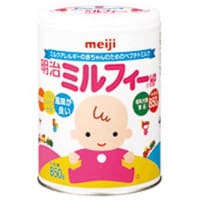
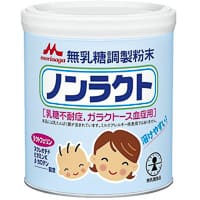
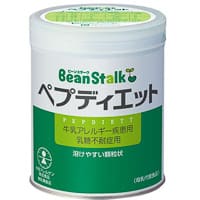
These are the notable lactose-free formula milk brands in Japan: Meiji Milfy HP, Morinaga NONLACT, and BeanStalk Pepdiett.
Easy-to-Digest Protein Formula
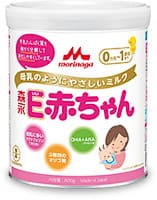
E-Akachan is made of smaller peptides, similar to partially hydrolyzed formulas like Similac Pro Total Comfort, Enfamil Gentlease, and Gerber Good Start Soothe. Meaning it is easier to digest and gentler for babies’ tummies. E-Akachan milk also contains soy derivatives.
For GI Troubles
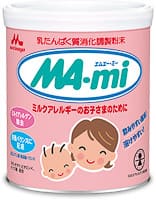
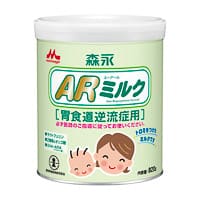
Morinaga MA-mi – Also designed for babies with eczema symptoms, diarrhea, and excessive fussiness due to cow’s allergies. The difference between MA-mi and E-Akachan is that MA-mi doesn’t contain any soy, egg, or fish derivatives and is made of high-quality casein and whey proteins to reduce allergic reactions.
Morinaga AR – AR stands for anti-regurgitation and is the only formula milk in Japan for babies’ GERD.
Japanese Formula Milk Have Better Packaging
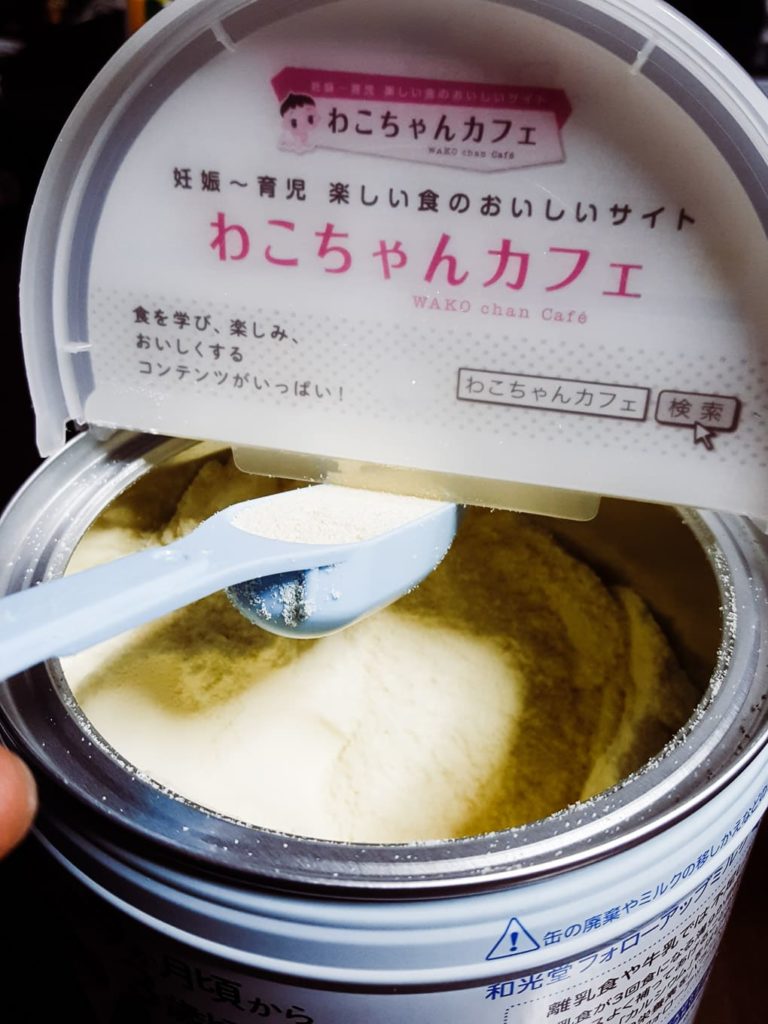
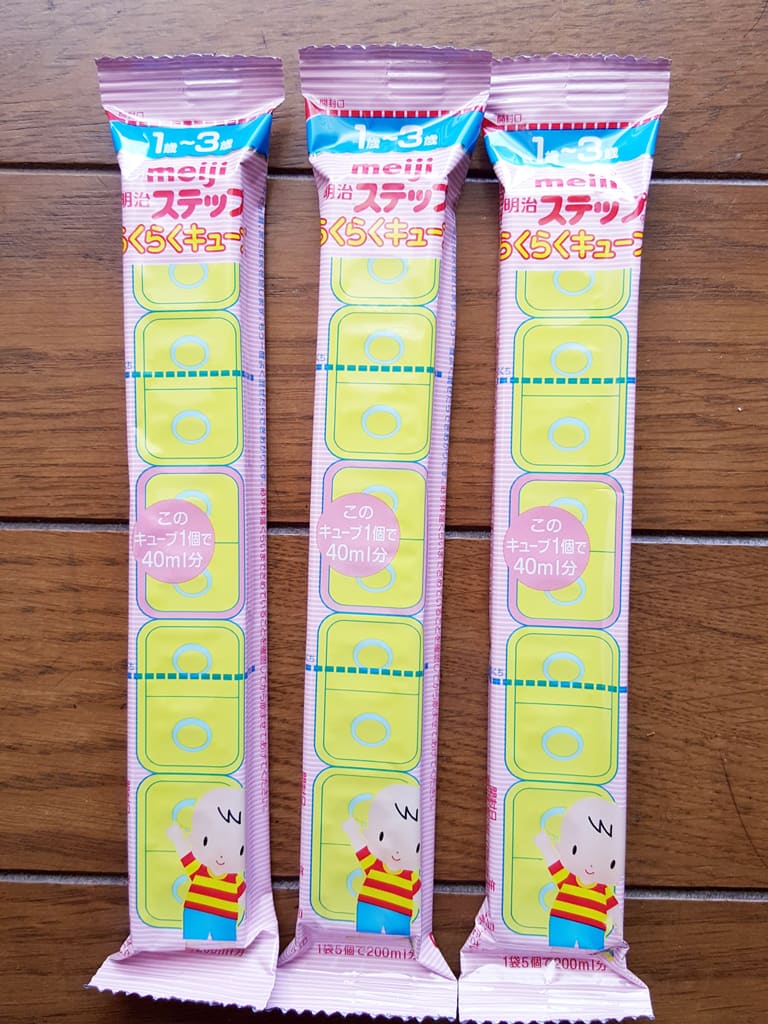
The Japanese milk packaging is much better than American brands. You don’t have to dig for the spoon with Japanese milk, and its lid acts as a level scoop. Also, all Japanese milk brands have stick packets available and popular among Japanese mothers who travel. It’s convenient to use, but it also doesn’t take up much space in the diaper bag. No mess too! I have personally used these packets, and it is convenient whenever we travel. I suggest you buy the sticks packets for an emergency stash of baby formula. Lastly, you cannot find a ready-made liquid formula in Japan should you be looking for one. This is because the Japan Food and Sanitation Act defined breast milk substitutes as “powdered” milk for hygiene purposes. So only powdered formula milk is approved for marketing in Japan.
Is there any Halal Milk in Japan?
Morinaga Chil Mil used to be the milk that Muslim mothers used in Japan, but they changed their ingredients recently. For Muslim parents who live in Japan, this is a real challenge, and most order it online. So before you travel to Japan, make sure you have enough milk supply or formula milk supply for your baby.
Which formula milk did we use for our baby?
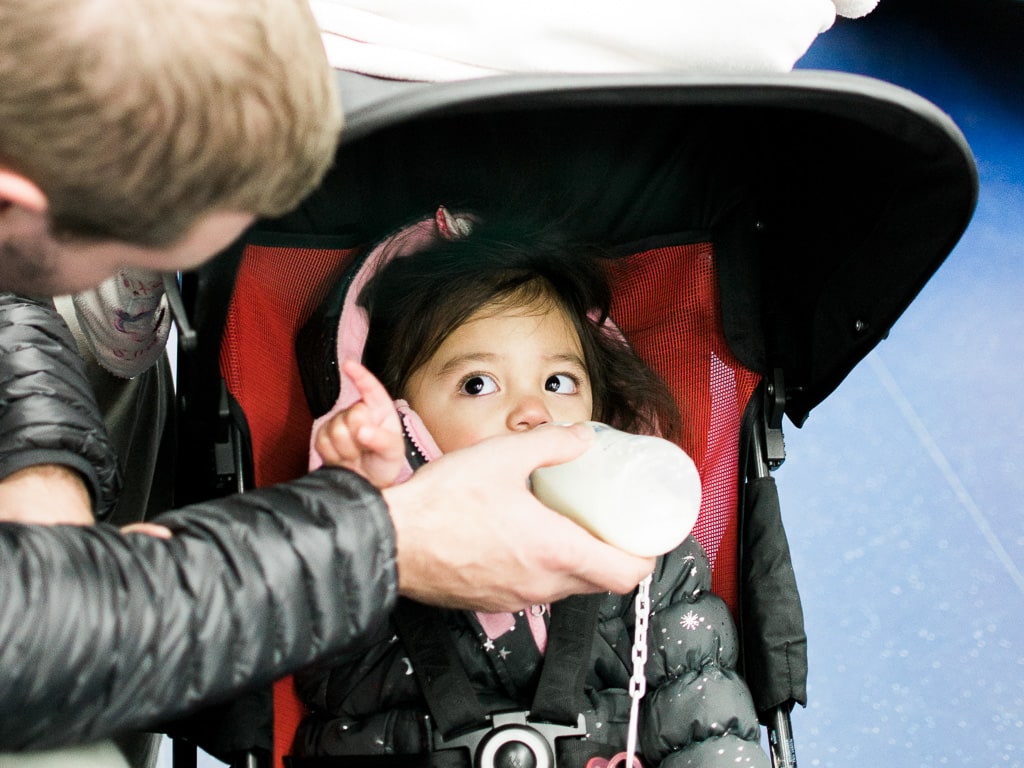
My daughter was on a combination of breast milk and formula milk during her first few months. But when she was around four months old, she had signs of a severe milk allergy where she showed excessive fussiness, unmanageable eczema on her cheeks, and streaks of blood in her poop. Her pediatrician ruled out severe milk allergy as soy milk didn’t work for her either. The doctor then prescribed elemental milk called Nutramigen.
When my daughter was about 13 months, she started to refuse Nutramigen. Her sense of taste must have fully developed because it tastes awful. So, we tried to put her back on regular formula milk, hoping that she had also outgrown her milk allergy. I tried Similac Sensitive first, but this made her very constipated. Other American brands, such as Gerber and Enfamil, did the same. So I tried Japanese milk.
The first Japanese milk I tried was the Icreo, but that made her constipation worse. I then switched her to Meiji Step Milk and had success with it. She was on Meiji Step for a while. But I changed her to Wakodo Gun Gun as they almost have the same nutrients, and Wakodo is a lot cheaper. Our daughter drank Wakodo until 18 months of age with no issues at all. Her cheek eczema is also pretty much gone. We still use Meiji, but only when we travel. This is because Meiji has stick packets with cubed milk, making it very convenient to use on the go.
Which formula milk do most mothers in Japan use?
For most mothers in Japan with infants, Beanstalk Sukoyaka M1 and Morinaga Hagukumi infant formula are popular choices. At least, that’s what I also notice with Japanese mothers whenever I shop at a drugstore (I keep my eyes on what milk they get for their babies, and it’s almost always Beanstalk or Morinaga). Beanstalk Sukoyaka M1 and Hagukumi are also “Best Sellers” on Amazon Japan. But these milk brands are also the most expensive. For mothers with toddlers, Meiji Step and Wakodo Gun Gun seem to be popular choices. My Japanese friend used Meiji formula milk for her son since his birth with no issues. She also said it was the only milk that her baby would drink.
How to Read Labels in Japanese Formula Milk
- ⽣生後⽉月齢 – baby’s age
- カ⽉月 – months
- 平均体重- average weight
- 1⽇日の回数 – daily intake
- スプーン – spoon
- できあがり量量 – water amount
For stick packaging, look for:
- スティックパック – stick pack
It’s easy to spot stick packaging though. They’re always in a box.
How to Prepare Japanese Formula Milk
Almost all Japanese formula milk has the same instructions for preparation. Here are the typical instructions:
- Wash your hands thoroughly and make sure your hands are dry.
- Add the milk powder to the baby bottle.
- Put 100ml hot water in the baby bottle.
- Swirl the bottle until the milk powder is dissolved. Do not shake! Shaking will
form bubbles and it will make it difficult to see the water level. - Dilute distilled or purified cold water into the bottle.
- You can shake it this time.
- Test the temperature of the milk before feeding the baby.
- Consume within 2 hours.
What is the Best Formula Milk in Japan?
Remember, every baby is different. The formula milk that works for my baby or another mother’s baby might not work for yours. Ultimately, the “best” formula will always be the one your baby will drink. If you’re only briefly traveling to Japan, buy the stick packets or the smaller can first to see how well your baby will react to it. That way, should the milk not work out, you can toss it and switch to another brand.
Finally, the best place to buy formula milk is in drugstores or MEGA Don Quijote stores widely available throughout Japan. I like Welcia and Create SD drug stores because they always have a vast selection of formula milk. But these stores are popular in smaller suburban areas. In larger cities like Tokyo, Osaka, or Kyoto, Matsumoto Kiyoshi Drugstore and MEGA Don Quijote is my next favorite.

Salaam
I just started giving my baby morinaga chirumiru (the yellow packaging one) without knowing the ingridients, is it haram? Thankyou for answering
Hi, i came across your blog when i searched for japanese milk for babies. I want to start switching from exclusive pumping to formula milk but my daughter (1 yo) has cow’s milk allergy. So as you said your kid has milk allergy too and fine with wakodo gungun. So is wakodo gungun partially hydrolised milk? Thank you in advance 🙂
Which website or store can we buy J formula from ? Thank you
Very informative and useful. Going to Japan in a few weeks and plan to use this information. Appreciate this so much!!!
Hi, came across your blog while searching for info on Japanese formulas. Thank you for the informative post! I think there’s a real niche that you can carve out for yourself to differentiate from the other Japan travel blogs, and that’s Japan travel with baby/toddler. I know you did some articles like Best hotels for kids and best activities for kids etc, but I think there are more topics that will get a lot of views, such as how to navigate around Tokyo/Osaka/Kyoto with a kid/baby, what areas are strollers actually feasible, how old would you recommend the kid to be etc. Just my two cents, thanks for the useful posts so far!
Does Japan offer any non GMO baby formula?
Hi Kai, any products here can be non-GMO or GMO but many Japanese companies do not use the label, so it’s tricky. Unfortunately, I have not seen Japanese formula milk that is labeled non-GMO.
This article is a god send. Thank you so much! You really helped us – we ran out of formula and were freaking out until we found this.
Any insight into how breastfeeding is viewed? I’m particularly thinking of the 3 – 12 month stage with frequent feeding. I don’t use formula. Thanks!
Hi Nadia, breastfeeding is perfectly normal in Japan. Almost all malls have breastfeeding/nursing rooms. And if breastfeeding in public, don’t forget your breastfeeding cover.
Wow! Thanks for this article. I appreciate it. We going to Tokyo and I’m working what milk to buy just Incase we run out of it. It’s very helpful.
You’re very welcome!